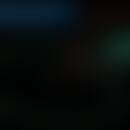Synonym(s)
DefinitionThis section has been translated automatically.
Chemokines, a subgroup of cytokines, are small (size between 8 and 10 kDa), chemotactically active proteins (signal proteins). They are common in all vertebrates, some virus types and bacteria. In humans, about 50 chemokines are currently known. A strongly conserved structural feature of all chemokines is a fixed group of cysteine residues that is stabilized by 1 or 2 disulfide bridges. This key structural position in the molecule is responsible for its fixed 3-dimensional structure (see below chemokines).
In the CC-chemokines the cysteines follow each other directly, in the CXC-chemokines they are separated by 1, in the CXXXC-chemokines by 3 other amino acids (see figure). Chemokines are produced and secreted by a large number of immune cells. They mediate their signals by means of specific chemokine receptors via G-proteins. The fact that chemokines and their receptors are not only expressed on inflammatory cells, but also by epithelial cells, mesenchymal cells, neurogenic cells, endothelial cells, and various tumor cell lines, suggests that they participate in numerous regulatory cell functions.
CXCL15, also known as C-X-C motif chemokine 15 or "lungkine", is a small chemokine from the group of CXC chemokines described in the mouse. The highly conserved chemokine is encoded by the CXCL15 gene, which is located on chromosome 5 in the mouse.
CXCL15 recruits neutrophil granulocytes during inflammatory reactions in the lung parenchyma. It is mainly expressed in the epithelia of the lung, but can also be detected in the epithelia of other mucosa (urogenital tract, gastrointestinal tract), and in endocrine organs.
The clinical relevance of CXCL15 in humans requires further investigation.
LiteratureThis section has been translated automatically.
- Heyen L et al (2016) Lung epithelium is the major source of IL-33 and is regulated by IL-33-dependent and IL-33-independent mechanisms in pulmonary cryptococcosis. Pathog Dis 74. pii: ftw086.
- Schmitz JM et al (2007) Expression of CXCL15 (lung kines) in murine gastrointestinal, urogenital, and endocrine organs. J Histochem Cytochem 55:515-524.



